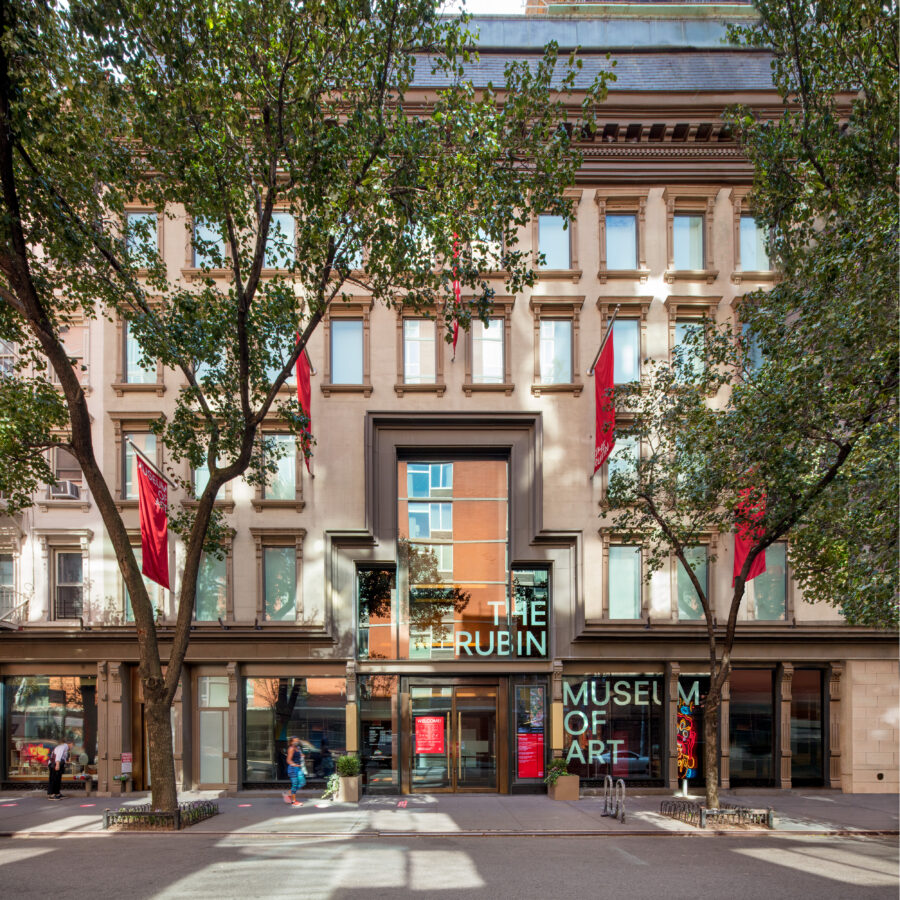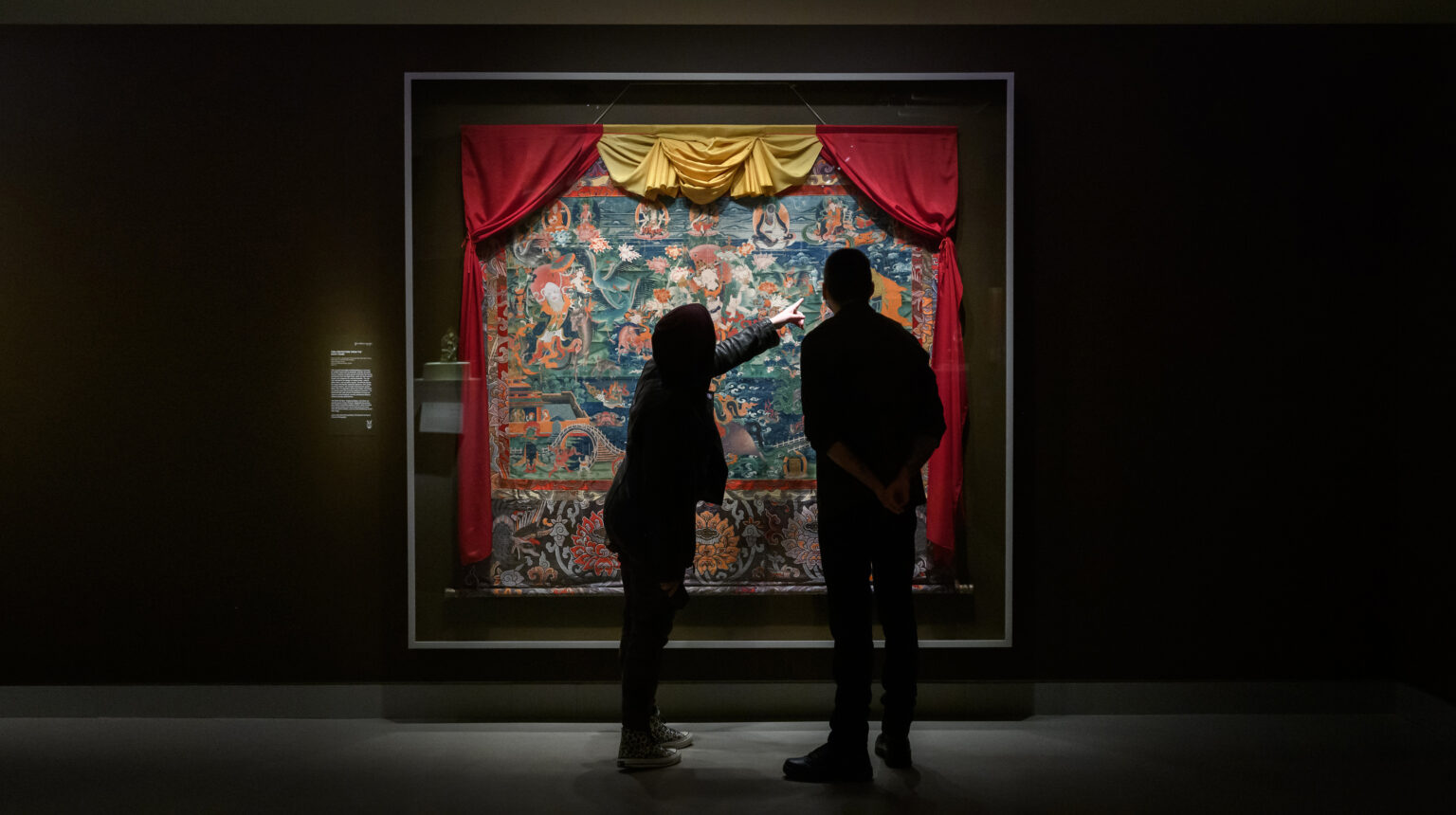Address: 140 West 17 th Street New York
Phone: (212) 620-5000
Working hours:
Monday Closed
Tuesday Closed
Wednesday Closed
Thursday 11:00 AM – 5:00 PM
Friday 11:00 AM – 10:00 PM
Saturday/Sunday 11:00 AM – 5:00 PM
The Mandala Lab is reserved for family programming from 1:00 PM -3:00 PM every Sunday.
The museum is closed for Christmas, Thanksgiving and New Years.
The museum closes at 5:00 PM on Christmas Eve and New Year’s Eve.

Photo by Dave De Armas
ABOUT US
Founded in 2004, the Rubin Museum of Himalayan Art first opened its doors at 150 West 17th Street in Chelsea, New York City. Today we’ve evolved to serve people across the globe, modeling new possibilities for how museums might reach, engage, and serve the public worldwide.
Inspired and informed by Himalayan art, the Rubin invites people to contemplate the human experience and deepen connections with the world around them in order to expand awareness, enhance well-being, and cultivate compassion.
The Rubin advances scholarship through a series of educational initiatives, grants, a collection sharing program with other museums and institutions, and the stewardship of its collection of nearly 4,000 Himalayan art objects spanning 1,500 years of history—providing unprecedented access and resources to scholars, artists, and students across the globe.

Our Story
The Rubin Museum of Himalayan Art (formerly Rubin Museum of Art) was founded in 2004 as a haven for Himalayan art in the Chelsea neighborhood of New York City by Shelley and Donald Rubin, who are philanthropists, cultural leaders, and collectors. The opening was the culmination of 30 years of art collecting, six years of planning, and the purchase and renovation of the former Barneys department store at 150 West 17th Street in Manhattan. This new not-for-profit museum dedicated to Himalayan art was the first of its kind in the United States.
The Museum’s galleries were accompanied by a theater, shop, and Café Serai, and later an education center was built with classrooms and studios. Over time the Rubin expanded resources for families, teens, and K–12 and university students. From the start, the Rubin showcased artworks that had yet to be thoroughly studied outside of the greater Himalayan region, presented bold, experiential programs that engaged leading thinkers and artists across disciplines, and inspired dialogue and personal connections to the ideas inherent in the art.
The Museum on 17th Street became a beloved and well-respected cultural landmark, deemed “one of the biggest thinking small museums in all of Manhattan” by the New York Times. Over the course of two decades the Rubin welcomed over 2.5 million visitors, presented over 145 exhibitions, hosted over 6,500 programs, and published 35 scholarly publications.
Beginning in 2022 the Rubin expanded our reach with projects beyond the Museum walls, with the inaugural Nepal Pavilion at the Venice Biennale; a traveling version of the interactive Mandala Lab installation in Europe; the support of the Itumbaha Museum, a new museum at a Newar Buddhist monastery in Kathmandu, Nepal; and the launch of Project Himalayan Art, the organization’s biggest institutional project serving students, educators, and scholars nationally and beyond. These initiatives piloted new ways of fulfilling the Museum’s mission and connecting with audiences across the world.
Building on the successes of these projects and in the same spirit of innovation, after 20 years, on October 6, 2024, the Rubin closed the physical location on 17th Street to embark on our next chapter as a global museum.
Today the Rubin continues to be the leading presenter of Himalayan art, with exhibitions, participatory experiences, educational initiatives, and research, serving more people than before through collaborations and partnerships, digital technologies, and collection sharing.
Information and photos taken from the site: rubinmuseum.org





